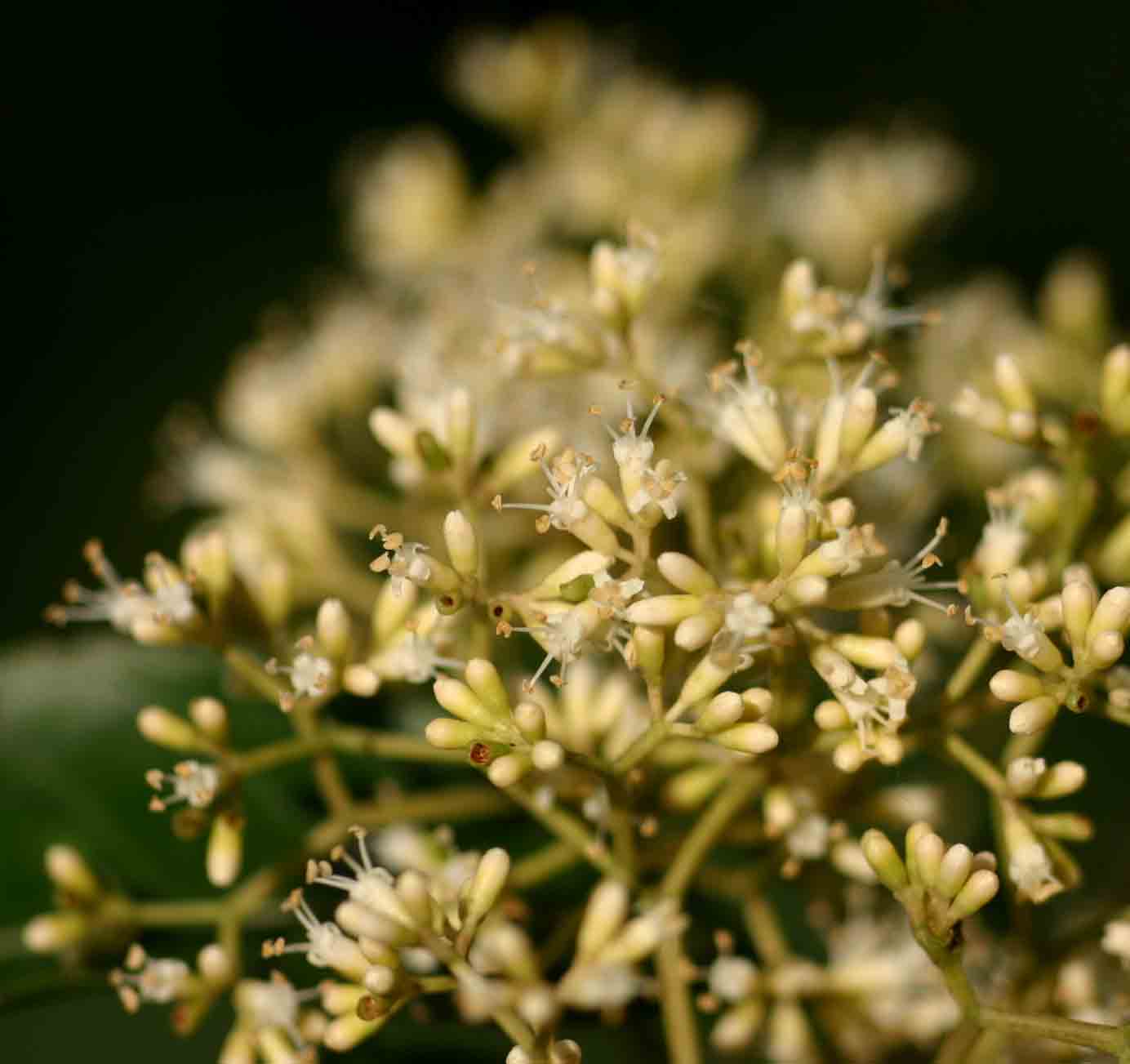博文
Lamiales---Stilbaceae---Nuxia floribunda
||
Stilbaceae
Family description [1]
Ericoid shrubs, ordinary shrubs, or herbs; (iridoids from deoxyloganic acid - C-8 iridoid glucosides), (cornosides +); cork just outside pericycle; vessel elements also with scalariform perforation plates; nodes ?; petiole bundle?; stomata?, cuticle waxes as rods or threads; lamina vernation revolute or not, (margins minutely toothed); inflorescence branches cymose, (plant cauliflorous), (flowers axillary); bracteoles as long as K; flowers often polysymmetric, (4) 5(-7)-merous; K bilobed or not (free), C lobes equal to unequal; stamens = sepals, (one fewer; staminode +), anther thecae confluent apically, or with separate parallel slits; ovary (apically) unilocular, [1 G infertile, or septum 0], or bilocular, stigma slightly bifid or punctate; ovules 1-2/carpel, ascending and/or descending, apo/epitropous, or many; micropyle long, integument several [ca 15?] cells across, hypostase +; embryo sac very long; fruit a loculicidal (and septicidal) capsule, (indehiscent), K and C persistent; (seeds with pedestals - Charadrophila); endosperm +, embryo cylindrical [always?]; n = 10, 12, 19; protein bodies in nucleus crystalline [Halleria].
Including 11 genera and 39 species;
Most South Africa, the Cape Province, also to tropical Africa, Madagascar, the Mascarenes and Arabia
Nuxia
Systemati position: nwo in Stilbaceae, previously in Loganiaceae (Allaby 1998) or Buddlejaceae (also including Buddleja,Gomphostigma)[2].
The genus Nuxia is found from South Africa to Arabia including Madagascar, the Comores and Mascarene Islands. It is a small genus with around 20 species in all, five of which occur in southern Africa. It is comprised of trees and shrubs with bark that is fibrous and stringy. Leaves are in whorls of three, but occasionally are opposite and rarely alternate in their arrangement, and the flowers which are bisexual are borne in terminal or axillary inflorescences. [2]
The genus contains 15 species[1].
Nuxia floribunda Benth.


Description:
Small to mediumsized tree. Leaves opposite or in whorls of 3, broadly elliptic, light glossy green, hairless; margin entire or obscurely toothed on young plants. Flowers small, white, borne in large, conspicuous, branched heads, up to 300 mm long; sweetly scented. Fruit a small ovoid capsule, protruding from the persistent calyx, pale brown.[3]
Flowering: (Apr-) May - Sep [3]
Distribution: East Africa southwards to South Africa[2]. It is fairly widespread in forests and on forest margins in the coastal and mountain forest belt, occurring frequently along watercourses (Von Breitenbach 1965)[1].
Seeds Germination:
The seeds which are very small in size should be scattered evenly over the surface of the medium and very lightly covered with fine river sand. Place in a warm, brightly lit position and keep moist. Germination times generally vary between 6 and 12 weeks. According to Von Breitenbach (1965) the germinative capacity of the seed may however be very low. [1]
Seeds morphology:



[1] Angiosperm Phylogeny Website. http://www.mobot.org/MOBOT/research/APweb/
[2] http://plantzafrica.com/plantnop/nuxiaflor.htm
[3] Flora of Zambia http://zambiaflora.com/speciesdata/species.php?species_id=144480
https://blog.sciencenet.cn/blog-56870-993453.html
上一篇:学习ICN法规:自动模式指定(automatic typification)
下一篇:TreeGraph使用技巧